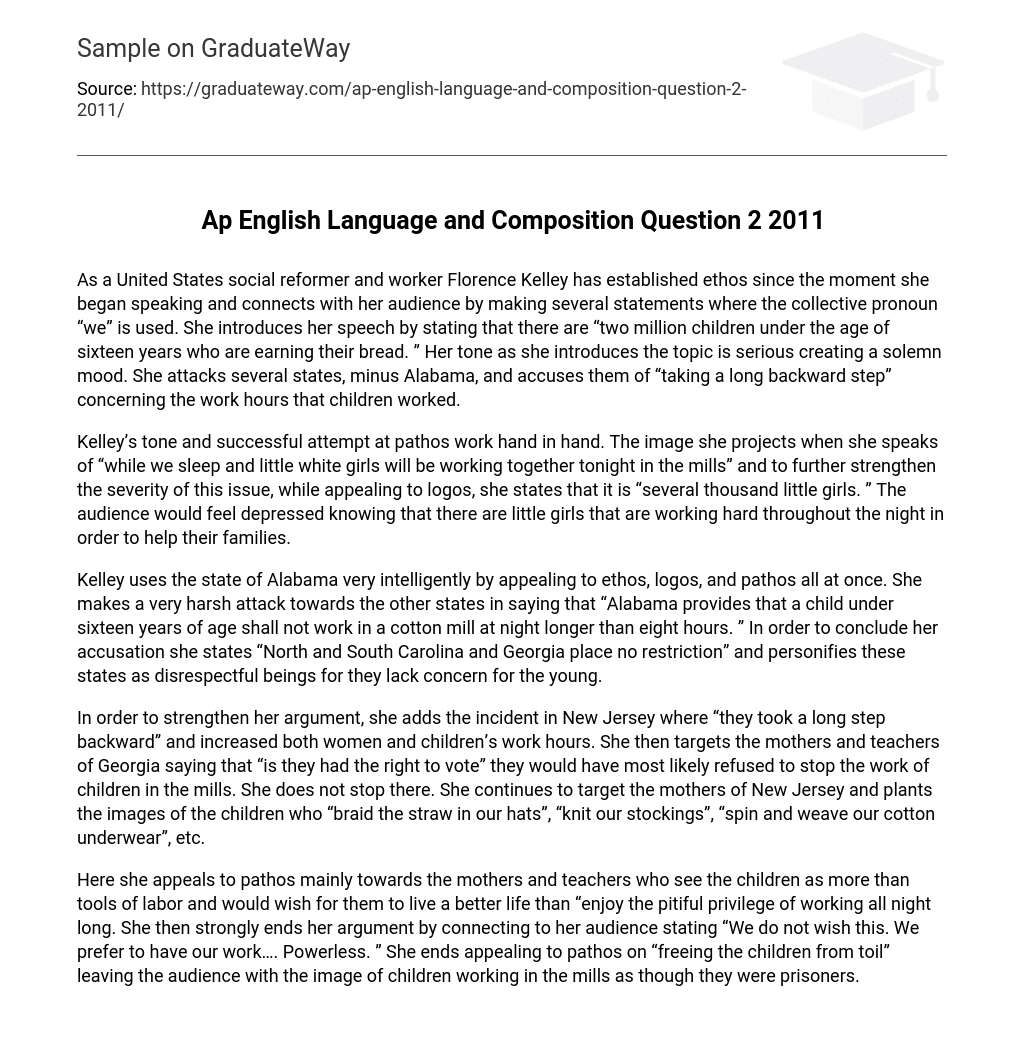Florence Kelley, a social reformer and worker in the United States, establishes her ethos from the moment she begins speaking by connecting with her audience using the collective pronoun “we” in several statements. In her speech’s introduction, Kelley reveals that “two million children under the age of sixteen years” are currently earning their bread, creating a solemn mood with her serious tone. Kelley also accuses several states (excluding Alabama) of regressing in terms of the work hours imposed on children.
Kelley effectively combines her tone and use of pathos to create a compelling message. By describing the image of young white girls laboring in mills while others sleep, she emphasizes the seriousness of the problem. Additionally, Kelley appeals to logos by mentioning the numerous little girls who work tirelessly at night to provide for their families. This data is likely to evoke deep sadness and concern for the well-being of these young girls from the audience.
Kelley’s approach in Alabama is a shrewd one, as she effectively appeals to ethos, logos, and pathos all at once. She skillfully critiques other states, emphasizing that “Alabama mandates that children under sixteen years of age cannot work in cotton mills at night for more than eight hours.” To support her statement, she also brings up the fact that “North and South Carolina and Georgia have no such restrictions,” portraying these states as uncaring entities that show no concern for the well-being of young children.
In order to strengthen her argument, the author includes an incident in New Jersey where women’s and children’s work hours were increased, which was seen as a setback. Furthermore, she directs her attention to the mothers and teachers in Georgia, suggesting that if they had the right to vote, they would have opposed child labor in the mills. However, the author does not limit her criticism to just Georgia. She also targets the mothers in New Jersey, painting a vivid picture of children engaged in various labor-intensive tasks such as braiding straw for hats, knitting stockings, and spinning and weaving cotton underwear.
The author employs pathos to appeal to the emotions of mothers and teachers who view children as more than mere tools of labor. They desire a better life for the children, rather than them being confined to the pitiful privilege of working all night long. The author effectively concludes her argument by establishing a connection with her audience, expressing that they do not desire this situation and prefer their work to be powerless. Ultimately, she tugs at the audience’s emotions once again by imagining the children trapped in mills, likening them to prisoners.





